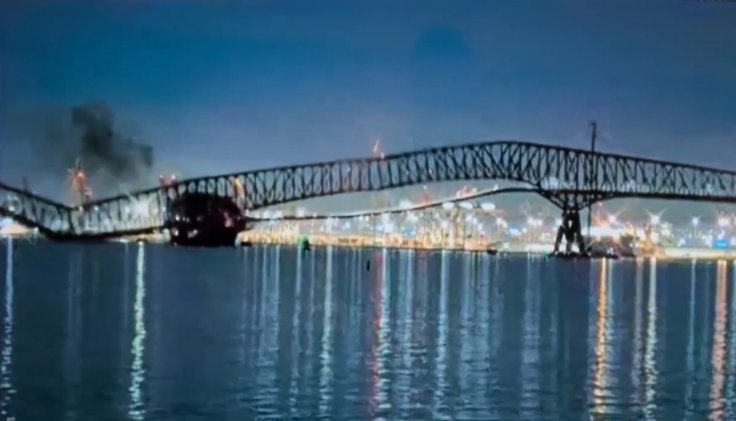A large container ship lost propulsion power in the waters near New York City and came to a halt close to the Verrazzano-Narrows Bridge on Friday night, less than two weeks after another massive cargo vessel's propulsion failure led to it colliding with Baltimore's Francis Scott Key Bridge.
US Coast Guard confirmed that its Vessel Traffic Service received a report that the 89,000-ton M/V APL Qingdao lost propulsion around 8:30 p.m. while navigating the Kill Van Kull waterway -- the shipping lane between Staten Island and Bayonne, New Jersey. The APL Qingdao conked off while crossing the Kill Van Kull waterway, a narrow shipping lane between Staten Island and Bayonne.
Avoiding Another Accident

The Kill Van Kull, stretching three miles in length, serves as the boundary between Newark Bay and Upper New York Bay. Known for its high traffic volume, it is one of the busiest waterways in the region.
An image posted on X.com, formerly known as Twitter, by John Konrad, the chief executive of maritime-themed news organization gCaptain, showed the 1,100-foot-long container ship floating uncomfortably close to the Verrazzano Bridge.
Konrad wrote in his post that the ship was positioned "just north" of the bridge, which connects Brooklyn and Staten Island.
Following the power failure observed on the Qingdao, three tugboats quickly responded to the situation to help and regain control of the massive shipping container.
"Coast Guard Vessel Traffic Service New York received a report from the M/V APL Qingdao around 8:30pm, Friday, that the vessel had experienced a loss of propulsion in the Kill Van Kull waterway. The vessel regained propulsion and was assisted to safely anchor in Stapleton Anchorage, outside of the navigable channel just north of the Verrazano Bridge, by three towing vessels," the Coast Guard said.
"These towing vessels were escorting the vessel as a routine safety measure, which is a common practice for large vessels departing their berth."
Narrow Escape
The Kill Van Kull waterway, a narrow tidal strait spanning three miles, acts as a divider between Newark Bay, where the Port Newark Container Terminal is located, and Upper New York Bay. It stands out as one of the busiest waterways within the Port of New York and New Jersey.

The Coast Guard required the vessel's propulsion system to be certified to ensure that it had been repaired and was operating at full capacity.
The crew was also required to provide a comprehensive casualty report detailing the factors contributing to the loss of propulsion.
Upon meeting these requirements, the vessel received clearance to proceed with its voyage to Charleston, South Carolina.
The unsettling image immediately evokes memories of last month's tragic incident at the Francis Scott Key Bridge in Baltimore, where six construction workers lost their lives when the cargo ship Dali collided with one of the bridge's supports, causing it to collapse into the Patapsco River.
This catastrophe brought maritime traffic to a standstill in the crucial Port of Baltimore. Maryland Governor Wes Moore mentioned on CBS' "Face the Nation" on Sunday morning that it was "realistic" to expect a return to normal operations on the waterway as early as May.
"It is an aggressive timeline, but we are going to work around the clock to make sure we hit this timeline," Moore said.
While the Dali suffered a loss of power leading up to the Baltimore crash, the APL Qingdao simply lost propulsion. Registered in Malta and owned by the French shipping and logistics company CMA CGM, the APL Qingdao was en route to Norfolk, Virginia when it suffered power failure.









